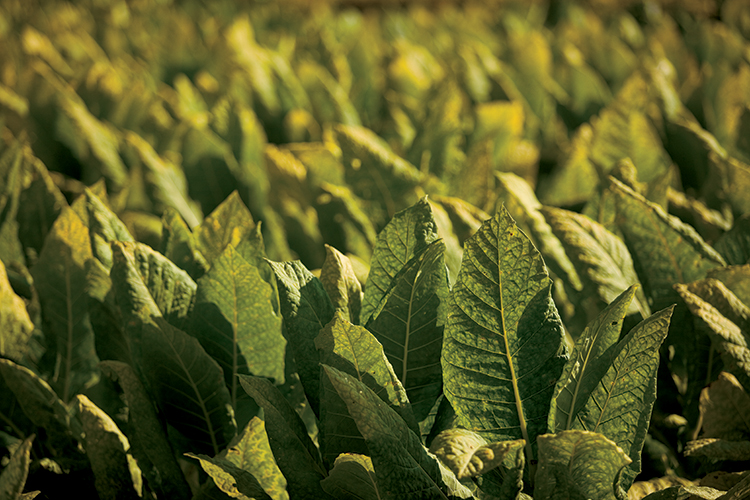Home > Virginia > Virginia Crops & Livestock > Future of Virginia Tobacco Burns Bright
Future of Virginia Tobacco Burns Bright
In partnership with: Virginia Department of Agriculture and Consumer Services
Virginia remains one of the top tobacco-producing states and ranks fourth in the country in the export of tobacco. Emerging technologies continue to create new opportunities for tobacco use and production.
“We had farm sales of $109 million in 2012, with a total impact on local economies of approximately $229 million,” says David Reed, extension agronomist at Virginia Tech’s Southern Piedmont Agricultural Research and Extension Center.
Special attention to cultivation, topping and sucker control, harvest and market preparation are the hallmark of Virginia tobacco growers. A world shortage of tobacco has created flourishing markets for Virginia tobacco in Asian and European countries, especially China.
“We presently have around 400 flue-cured farmers, maybe 75 dark fire-cured tobacco farmers, and perhaps as many as 1,000 burley growers in southwest Virginia,” Reed says. “Flue-cured tobacco represents approximately 90 percent of the tobacco acreage grown, with most substantially increasing their acreage following the buyout of the federal tobacco program.”
Bright leaf, or flue-cured tobacco, is cured for six to 10 days by a controlled heating process that converts starches to sugars, creating a “sweet” flavor. In contrast, burley tobacco is air-cured by hanging the plant on wooden sticks in a barn with no supplemental heat and takes about eight to 10 weeks.
“Flue-cured growers have embraced mechanization to reduce the labor required to grow tobacco,” Reed says. “This range [includes] greenhouse transplant production, harvesting, the handling of the green leaf going into the curing barns, processing the cured leaf from the barn and how the tobacco is prepared for marketing.”
New technologies such as GPS-assisted application of pesticides and fertilizers, conservation tillage and forms of computer automation are enabling growers to produce a higher-caliber product. Leaf grading and sorting is also assisted by new technology and ensures the highest-quality tobacco.
“Tobacco barns are now being controlled by automatic curing control systems, and some growers have wireless monitoring, allowing them to check barns on iPads and smart phones,” Reed says. “Hopefully new technologies will continue to develop to make the curing of flue-cured tobacco much more energy-efficient and automated.”
With innovations by industry experts and a welcoming global market, the future of Virginia tobacco looks promising.




